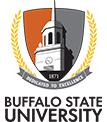Electrical Engineering Technology, Electronics
ENT 104
Essentials of Electrical Engineering Technology
Prerequisites: None.
Introduction to the field of Electrical Engineering Technology for majors and non-majors. Introduction to basic electricity, mathematical modeling of circuits, circuit breadboards, electrical instrumentation, computer analysis/circuit simulation and technical reporting. Emphasizes projects, project management and the need for teamwork by conducting projects in the areas of design, simulation and test. Required of all freshmen electrical engineering technology majors. Junior-transfer students will substitute a technical-elective course for ENT104. Offered every fall semester
ENT 300
Mathematics Applications in Engineering Technology
Prerequisite: MAT 127 or 162. Application of calculus and analytic geometry to problems in technology. Introduction to the ordinary differential equations used to analyze mechanical and electrical quantities in technology. Offered every semester.
ENT 301
Mechanics I
Prerequisite: PHY 107 or 111, MAT 126 or 161. The study of basic principles and applications of statics; topics include: equilibrium of rigid bodies, free body diagrams, friction, centroids, moment of inertia, trusses, frames and machines, and equilibrium of particles. Offered every semester.
ENT 330
Electric Circuits Analysis I
Prerequisites: PHY 108, or 112, or equivalent.
Direct Current (DC) electric circuit concepts; basic circuits elements and their characteristics; analysis of series and parallel circuits; modeling and analysis of DC circuits with multiple sources; electrical instrumentation and computer analysis tools used in performing laboratory experiments. Required for electrical engineering technology majors. Offered every fall semester.
ENT 332
Electric Circuits Analysis II
Prerequisites: ENT 330 or equivalent.
Alternating Current (AC) electric circuit concepts; waveform analysis; analysis of series and parallel AC circuits; electrical instrumentation and computer analysis tools used in performing laboratory experiments. Required for electrical engineering technology majors. Offered every spring semester.
ENT 341
Electronics
Prerequisite: ENT 330. Study of electronic circuits and semiconductor devices including: diodes, transistors, operational amplifiers, thyristors, etc. Physics of semiconductors, transistor biasing, and amplifier circuits. Laboratory exercises provide practical application of semiconductor circuit theory. Offered every spring semester.
ENT 342
Advanced Circuits Analysis
Prerequisite: ENT 300, ENT 332. Methods of DC electrical-circuit analysis, DC transient-circuit analysis, Laplace Transforms and applications to electrical circuits and sinusoidal (AC) steady state analysis, transfer functions and networks, frequency response and Bode plots, waveform analysis, and Fourier analysis. Offered every spring semester.
ENT 345
Digital Systems
Corequisite: ENT 341. This course analyzes digital logic systems and their components that are a major part of modern electrical technology including applications in computers, manufacturing, communication, control, and other engineering systems. Offered every spring semester.
ENT 346
Microcontrollers
Prerequisite: ENT 345.
This course introduced the theory and application of microprocessors and microcontrollers and develops proficiency in programming Assembly and C languages, interfacing, as well as prototyping and troubleshooting. Offered every fall semester.
ENT 351
Analog Circuits Analysis
Prerequisites: ENT 341 and ENT 342. Analyze, troubleshoot, and design foundational circuits employing operational amplifiers (op amp) and other electronic devices; establish proficiency with electronic circuit computer analysis tools and electronic instrumentation. Required for electrical engineering technology electronics option majors. Offered every fall semester.
ENT 371
Electric Machines
Prerequisites: ENT 332
DC and AC machines and transformers are studied as an integral part of electric power systems. Single and three-phase induction and synchronous machines, DC motors and fractional horsepower motors, including stepper motors, are included. Solid state motor control is introduced. Computer tools for study of motor performance is included. Laboratory experiments illustrate motor performance and measurement techniques. Offered every fall semester.
ENT 441
Communication Transmission Technology
Prerequisites: ENT 332 and senior status
Introduction to the development and technology of digital, RF, microwave and optical fiber communications including transmission line types and characteristics, components, measurement of reflections, power, impedance and wavelength. Signal structure and protocols used in data communications are presented. Computer analysis and design of digital and carrier communication circuits is emphasized. Offered every fall semester.
ENT 442
RF and Microwave Communications
Prerequisite: ENT 441
Introduction to wireless communication technology. Free-space and near earth propagation effects including RF safety, multipath and antennas are covered. Receiver and transmitter design, components and performance are included. Emphasis is placed on digital representation of signals and transmission of digital data, types of modulation and channel capacity. Systems and applications are emphasized. Offered every spring semester.
ENT 446
Digital Systems Design and Analysis
Study of Field Programmable Gate Arrays (FPGAs) and their Hardware Description Languages (HDLs), used in connection with advanced industry technologies. This includes exposure to microcontrollers for smart devices, serial communication, and survey of smart sensors. Required for electrical engineering technology electronics option majors. Offered every spring semester.
ENT 461
Control Systems I
Prerequisite: ENT 341, ENT 342, and Senior Standing
This course applies frequency domain techniques to open-loop and closed-loop systems with emphasis on stability and performance. Classical methods of control engineering are presented: Laplace transforms and transfer functions; root locus analysis; Routh-Hurwitz stability analysis; steady-state error for standard test signals; and second-order system approximations. MATLAB is introduced and utilized extensively for computer aided analysis. Laboratory exercises provide practical application of the control-system theory. Offered every fall semester
ENT 462
Control Systems II
Prerequisite: ENT 461
This course is project centered. Students build, tune, simulate, and model a system (such as a magnetic levitation apparatus) for the purpose of demonstrating skills acquired during previous academic work. The project will focus on practical application of the control-system theory developed in Control Systems I. Offered every spring semester.
ENT 465
Electrical Design I
Prerequisites: Senior standing; Co-requisite: ENT461
Advanced topics in electrical and system design, the design process, and project management; a major design project sequence that includes preliminary analysis, working drawings and schematics; preliminary design and its presentation. Offered every fall semester.
ENT 466
Electrical Design II
Prerequisite ENT465. Corequisite: ENT462
Advanced topics in electrical and system design, the design process, and application of project management; a major design project sequence that culminates with final analysis, working drawings, schematics, and installation or prototype; final design stages of construction, testing and installation of a significant engineering project. Offered every spring semester.

